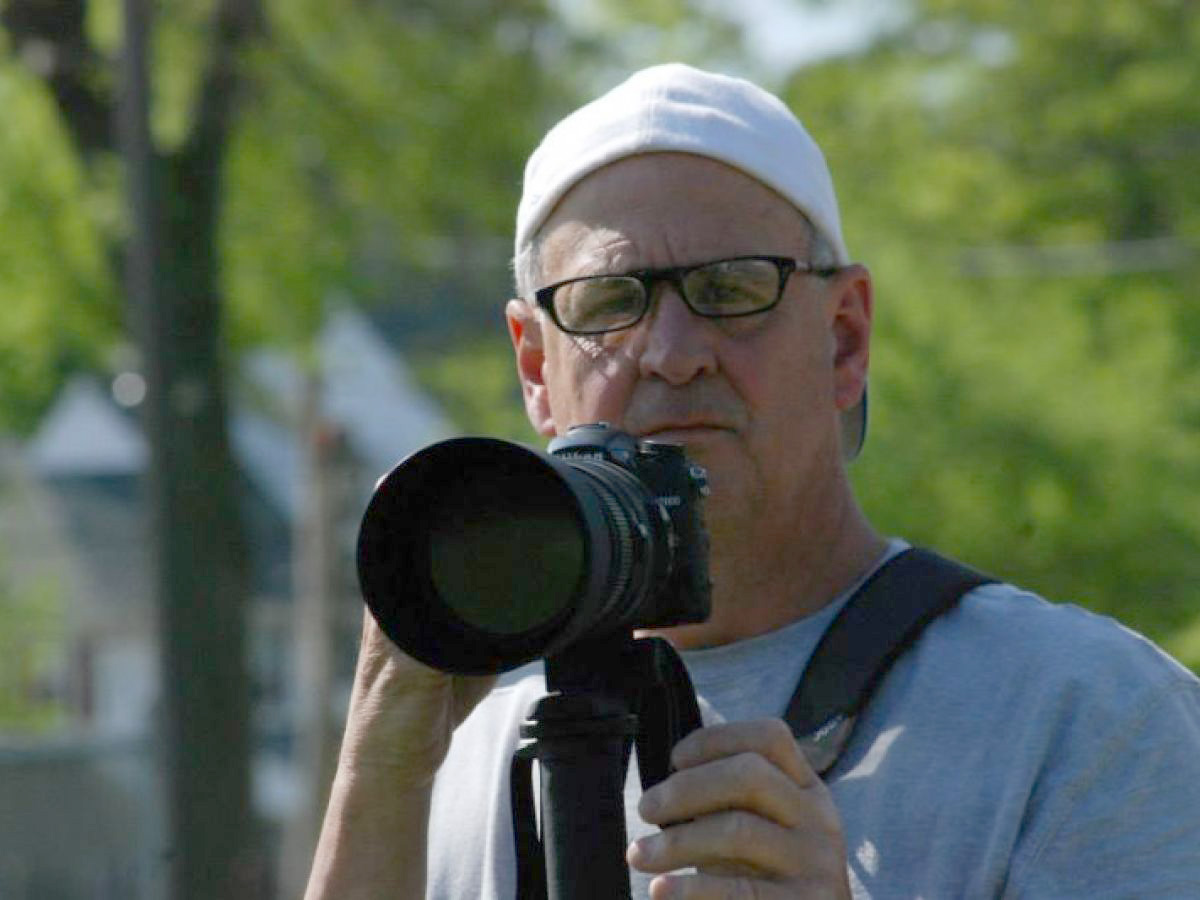Steve Bassignani photographs so many high school sports he keeps a spreadsheet at home detailing his calendar. That way his wife, Judi, knows at least what town he’ll be in on any given day.
After retiring at the end of 2015, Steve made photographing high school sports his main pursuit. In fact, one of the reasons he retired was to spend more time doing photography. And most days, that’s exactly what he does.
“Every day I try to find a sporting event,” he said. He photographs mostly Hopedale sports, but if Hopedale isn’t playing he’ll go further afield. Steve will cover almost any sport – basketball, baseball, ice and field hockey, tennis, cheerleading, even horse racing at Saratoga, New York. You name it, he’ll photograph it.
“I cover every single sport,” Steve said with a laugh. “The kids know when I don’t show up.” He finds photography a great way to hone his memory skills, and fully admits he’s making up for lost memories. Like most parents, when his sons Adam and Anthony were kids, Steve simply didn’t have the time to take a lot of photos. Now that he’s retired he’s re-making those memories, but with other people’s kids.
His Facebook page holds collections of photos not only of sports but of the sidelines, along with school events and other activities. As a substitute in Hopedale Junior-Senior High School, Steve follows Hopedale sports as a matter of course, but he’ll take his camera wherever the action is.
Steve started taking sports photos by shooting a neighbor’s daughter during games. Her friends asked to have their photos taken, too, and then her teams. Then the boys’ sports teams demanded attention. The photography snowballed – Steve now admits to taking somewhere between 2,000 and 3,000 photos each week. “Now the referees want their pictures taken,” he joked.
For Steve, it’s about the kids. He didn’t turn to photography as a way to earn extra money after retiring. He loves the challenge of shooting sports, and posts almost every photo on Facebook to be viewed and downloaded for free. “I do it for nothing. I don’t charge the kids,” Steve said. He’s had friend requests from all over the world as students with families in other countries share their experiences playing American sports.
Steve has been using a camera to view the world for a long time, and he’s mostly self-taught. “I call myself a ‘ham-and-egger.’ I had to learn from scratch,” he said. Steve is of the generation that took their rolls of film to those little Foto Hut kiosks, hoping at least one of the shots was good. Digital photography changed that.
He bemoans the fact that young people today see photographs as something to be viewed on a screen, not held in the hand. With the rise of digital photography, snapshots aren’t being stored in shoeboxes but on cell phones or in the cloud. An important question lingers: what happens if that technology crashes or becomes obsolete?
Steve’s mother kept a scrap book of his sporting youth filled with newspaper clippings, now so fragile it can barely be opened. “These kids are never going to make a scrapbook album, many of them don’t even know what that is,” Steve said. To get his point across, he recently had some digital photos printed and placed them out at school, just to watch the reaction. He saw boys and girls flipping through this old-fashioned photo format, joyously looking for pictures of themselves and their friends.
As a substitute teacher, Steve tries to promote the idea that photos are an important link to the past. He uses a family treasure as a teaching moment, bringing a photo of his father during World War II to class. The photo shows his father, Frederick, standing on the deck of the U.S.S. Weeden off the coast of the Philippines during the war. That black-and-white photo is history. At over 80 years old, it tells a story of Frederick as a young man, a sailor not much older than Steve’s students, putting his life on the line for his country.
Steve raised another question with his students, and on his Facebook page – which is more engaging, “monochrome” photos, or full-color? “I like black and white,” he said, “there’s more detail in the photo.” But his students, although surprised by the look of a monochrome photo, are not so sure. “I would say it’s 70-30 in favor of color.”
Maybe Steve Bassignani’s photography is more than meets the eye. “The key to a picture is what you see, and how fast you can see something.”
“I like to stop the action,” he said, but added that taking pictures isn’t always about action. Recently, as the January thaw took hold and the temperature rose, Steve spent a quiet day walking Hopedale’s Parklands, taking shot after shot of the beautiful area in mid-winter.
“I have the time to devote to it now,” he said. Like Steve’s Facebook page says, “Love what you do and you won’t work a day in your life.” Steve Bassignani’s photos often appear in the Local Town Pages.

Issue Date:
February, 2020
Article Body:
